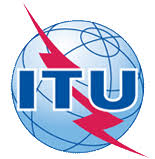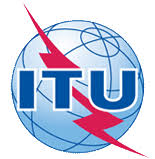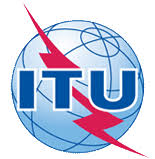ROLL at IETF 115
Routing Over Low power and Lossy networks (roll) Working Group has met at IETF 115, please find below the link to the video recording
https://www.youtube.com/watch?v=KwV1ajTdpQM
Routing Over Low power and Lossy networks (roll) Working Group has met at IETF 115, please find below the link to the video recording
https://www.youtube.com/watch?v=KwV1ajTdpQM
The IETF has published this month a new version of draft about Reliable and Available Wireless Architecture
Abstract: "Reliable and Available Wireless (RAW) provides for high reliability and availability for IP connectivity across any combination of wired and wireless network segments. The RAW Architecture extends the DetNet Architecture and other standard IETF concepts and mechanisms to adapt to the specific challenges of the wireless medium, in particular intermittently lossy connectivity. This document defines a network control loop that optimizes the use of constrained spectrum and energy while maintaining the expected connectivity properties, typically reliability and latency. The loop involves OAM, PCE, and PREOF extensions, and a new Controller plane Function called the Path Selection Engine, that dynamically selects the DetNet path for the next packets to route around local failures."
Source: https://datatracker.ietf.org/doc/draft-ietf-raw-architecture/
The objective of this Recommendation is to analyse identifiers in existing technologies and networks for IoT service, and describe the requirements of IoT identifier, common characteristics of IoT identifier, and the general architecture of IoT identifier.
This Recommendation describes the requirements and common characteristics of IoT identifier for IoT service. The scope of this Recommendation includes:
- Analysis of identifiers in existing technologies and networks
- Describe requirements of IoT identifier
- Describe common characteristics of IoT identifier
- Describe the general architecture of IoT identifier

This recommendation provides an overview of the Internet of things (IoT). It clarifies the concept and scope of the IoT, identifies the fundamental characteristics and high-level requirements of the IoT and describes the IoT reference model. The ecosystem and business models are also provided in an informative appendix.

we propose to raise awareness on the one hand of IoT standardization players on the energy impact in defining standards and on the other hand to developers of IoT stacks and applications. For this, we propose an approach consisting firstly of starting from the existing to highlight the energy impact in the choices of the use of a standard and its implementations and then secondly to identify a set of recommendations.
The IETF 114 is presenting several topics in IoT, such as:
More Information: https://datatracker.ietf.org/meeting/114/agenda/
The scope of the present document is to provide an overview of the IoT standards landscape: requirements, architecture, protocols, tests, etc. to provide the roadmaps of the IoT standards, when they are available

The present document would undertake compilation and review of activities taking place in the area of Smart City. It will analyse the relevance of Smart City applications, and possible underlying network architecture. The present document will describe use case descriptions for Smart City applications in context of but not limited to IoT communications.

Recommendation ITU-T X.1364 analyses potential deployment schemes and typical application scenarios for narrowband Internet of things (NB-IoT). It specifies security threats and requirements specific to the NB-IoT deployments and establishes a security framework for the operator to safeguard new NB-IoT technology applications. Current developments in telecommunication technology in the mobile communication domain, are leading to changes in communication patterns from person-to-person to person-to-thing and thing-to-thing, making inevitable the evolution to the Internet of things. Compared to short distance communication technologies such as Bluetooth, ZigBee and others, cellular mobile networks characterized by wide coverage, mobility and extensive connections that bring richer application scenarios will become the main interconnection technology of IoT. NB-IoT is based on cellular mobile network technology, using a bandwidth of approximately only 180 KHz. It may be deployed on global system for mobile communication (GSM) networks, universal mobile telecommunications system (UMTS) networks or long-term evolution (LTE) networks directly to reduce costs and achieve a smooth upgrade. Based on its low power dissipation, wide coverage, low cost and high capacity, NB-IoT is expected to be massively adopted by operators with wide application in multiple vertical industries. As a new technology, NB-IoT has its own characteristics that may bring new security issues. In order to ensure security of NB-IoT deployments and applications, security threats and relevant security requirements specific to NB-IoT need to be analysed and an overall security framework for NB-IoT needs to be established.

This document specifies the framework of a real-time IoT (RT-IoT) system, including:
RT-IoT system conceptual model based on domain-based IoT reference model defined in ISO/IEC 30141;
impacts of real-time parameters in terms of four viewpoints (time, communication, control and computation).

ISO/IEC 30163:2021 specifies the system requirements of an Internet of Things (IoT)/Sensor Network (SN) technology-based platform for chattel asset monitoring supporting financial services, including: - System infrastructure that describes functional components; - System and functional requirements during the entire chattel asset management process, including chattel assets in transition, in/out of warehouse, storage, mortgage, etc.; - Performance requirements and performance specifications of each functional component; - Interface definition of the integrated platform system. This document is applicable to the design and development of IoT/SN system for chattel asset monitoring supporting financial services.
